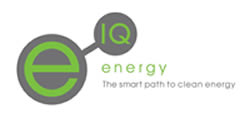Much of the industry press coverage lately has focused on multi-100MW projects. Yet these large, centralized production facilities are not really the best use of solar energy. They certainly have their usefulness, but distributed generation offers an even better approach.
Solar energy's vital role in our energy future
Michael Lamb | eIQ Energy
Following several recent and well-publicized failures in the solar industry, questions are being raised about public policies supporting the development of the U.S. solar industry. Critics complain that solar energy production creates few jobs, and that solar incentives are therefore not a good use of public funds. These commentaries prove that a better understanding of solar’s unique economic advantages is necessary to explain why it needs to be an integral part of our country’s long-term energy strategy. In fact, the solar industry’s need for taxpayers’ money has been steadily decreasing, and could be reduced even further by streamlining regulatory, legal and permitting costs.
When I was growing up in the U.S. Northeast during the fuel shortages of the 1970s, we heated our home using No. 2 fuel oil. Every time the cost of fuel oil spiked upwards my family had to make tough decisions on how to manage our household finances to afford the increased cost. Eventually, my father bought a new wood-fueled heating system. But while that ended our dependency on this volatile external influence, it also meant that our winters were spent cutting and splitting wood to feed the furnaces that kept our home warm.
Just as it was important for my family to stabilize its energy costs 30 years ago, energy independence is necessary today for the security of our economy and our country. Every time the price of fuel goes up, the effects are catastrophic as they ripple through the economy. Fuel costs are a major component of almost everything necessary to our existence, from shipping goods to market to running the tractors that grow our food. The result of unstable energy costs is to steal money from other markets, making their growth more difficult. Unpredictable energy costs are draining our resources, forcing us to make tough decisions, retarding our market growth and placing stress on our country.
The good news is that during the past three years, the cost of solar-generated electricity has fallen by more than 75 percent while the price of gasoline has doubled. So despite the perceived failures in the solar industry, the net result from our collective investments in solar power is actually an increasingly stable and more affordable energy source. This remarkable divergence demonstrates why solar energy deserves a significant place in our energy portfolio.
Much of the industry press coverage lately has focused on multi-100MW projects. Yet these large, centralized production facilities are not really the best use of solar energy. They certainly have their usefulness, but distributed generation offers an even better approach. That’s because locating solar PV electricity production close to where it is used allows us to avoid the large power losses typically required to transport electricity across the grid.
The other benefit that is often missed is that, unlike most other forms of energy generation, solar’s fuel source is free throughout the life of the asset. Therefore solar photovoltaic (PV) systems provide a very predictable energy yield. Since their maintenance requirements are minimal and very predictable, once they are commissioned owners are virtually certain of their cost for the next 20 to 30 years. This is what makes solar an ideal hedge against external economic forces and such a powerful weapon in our arsenal to achieve energy independence.
Unfortunately, most utilities are unable to recognize these economic realities. In their allconsuming pursuit of “grid parity,” they have no internal accounting mechanisms that allow them to credit solar energy for its benefits to the transmission grid, the environment or our energy independence. In fact the bureaucratic constraints of the utilities and other stake holders make it difficult to scale investment in solar down to the level where it makes most sense.
Solar is not just a rapidly deployable energy resource, it creates numerous jobs in producing and installing the equipment. This front-loaded investment pattern makes solar a very predictable energy source because unlike other options, once deployed, its energy output is insulated from external economic forces.
For solar energy to continue creating jobs for our economy, it needs a legal and political infrastructure that allows it to be financed and deployed in an economic manner. At this point, 10 to 40 percent of solar energy’s installed costs are imposed by regulatory, permitting, finance, legal and utility related issues. So the industry’s real challenge is less about continuing public subsidies and more about finding ways to lower investment costs by streamlining the bureaucracy.
Our country needs to find the political will to ensure energy independence for ourselves and our children, and we cannot afford to lose sight of the fact that solar energy remains an essential pvice president of product managementart of that equation.
Michael Lamb is vice president of product management for eIQ Energy, Inc., a San Jose, Calif.-based maker of patented power management technology that allows solar panels to be connected in parallel rather than in series.
The content & opinions in this article are the author’s and do not necessarily represent the views of AltEnergyMag
Comments (0)
This post does not have any comments. Be the first to leave a comment below.
Featured Product

